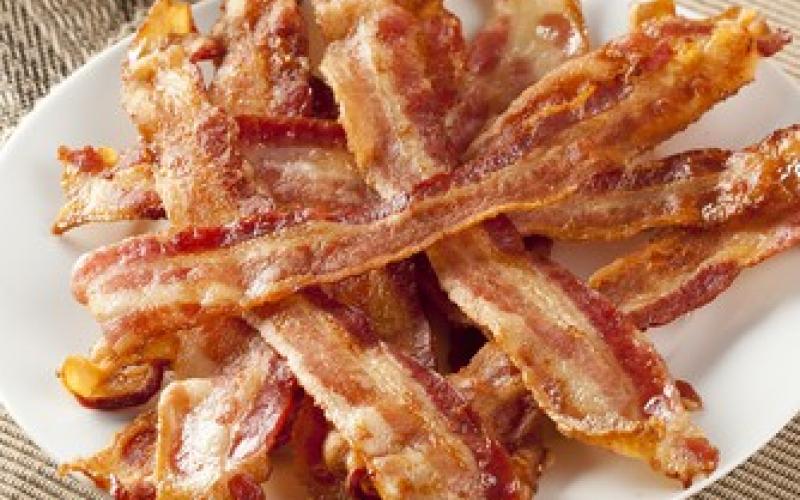Bringing home the newly packaged bacon

Bringing home the newly packaged bacon
Reducing the amount of packaging and using better materials can reduce overall environmental burdens.
Original Paper:
Kang, DongHo, Nikki Sgricia, Susan Selk, and Rafael Auras. 2013. "Comparison of bacon packaging on a life cycle basis: a case study." Journal of Cleaner Production 54 (May): 142-149.
DOI: http://dx.doi.org/10.1016/j.jclepro.2013.05.008.
Containers and packaging made up about 30% of all solid waste in the US in 2010. "Light weighting" refers to the reduction of the weight of packaging materials by changing the thickness or the type of material, which ultimately reduces the weight of the final packaged product. For instance, disposable water bottles made of thinner plastic may save less than a gram in weight, but the amount of plastics used can add up when considering the 30 million plus bottles of water sold in 2008. The light weighting of packaging can also provide savings in the transportation of finished goods – less weight means better fuel economy.
A team of scientists at Michigan State University compared two types of packaging systems for bacon, which accounts for 19% of total pork eating at home in the US. The life-cycle case study of bacon packaging was recently published in the Journal of Cleaner Production, and mainly focused on cradle-to-grave boundaries (starting from the extraction of raw materials through production, assembly, transportation, and waste treatment, including environmental benefits from recycling). The team modeled three scenarios for traditional packaging (traditional wax-coated paper with plastic pouch; and traditional with 25% and 50% less material) and two scenarios for new light-weighted packaging (reverse-printed plastic pouch, accounting for transportation of plastic resins from Germany and Texas).
The transportation distances of all material inputs and the weights of each component were carefully documented in building the life cycle inventory data, which was then assessed using the TRACI 2[1] methodology (environmental impact assessment tool developed by the EPA). Analysis was done to determine which life cycle stages had the greatest contributions to the environmental impact categories. The package production stage for all scenarios showed to be the largest contributor to global warming potentials and ozone depletion, while the disposal stage had the greatest contribution to carcinogens and eutrophication.
The traditional packages with 25% and 50% less material showed overall reductions in all environmental impact categories, such as global warming impacts at 92.56 and 80.10 kg CO2 equivalents per 1000 bacon packages (each package containing 1 pound of bacon), respectively. However, both scenarios of the light-weighted packaging system had nearly 30% lower global warming impacts, mainly due to the difference in types of plastic materials used for the packaging. The results of the study showed that light weighting and material change can reduce environmental burdens when compared to the bacon packages we currently find at our stores. Applying a life cycle view to consumer goods is effective in evaluating the environmental impacts of current products and comparing alternatives, as well as in identifying opportunities for improvement by contributing life cycle stages to impact categories.




